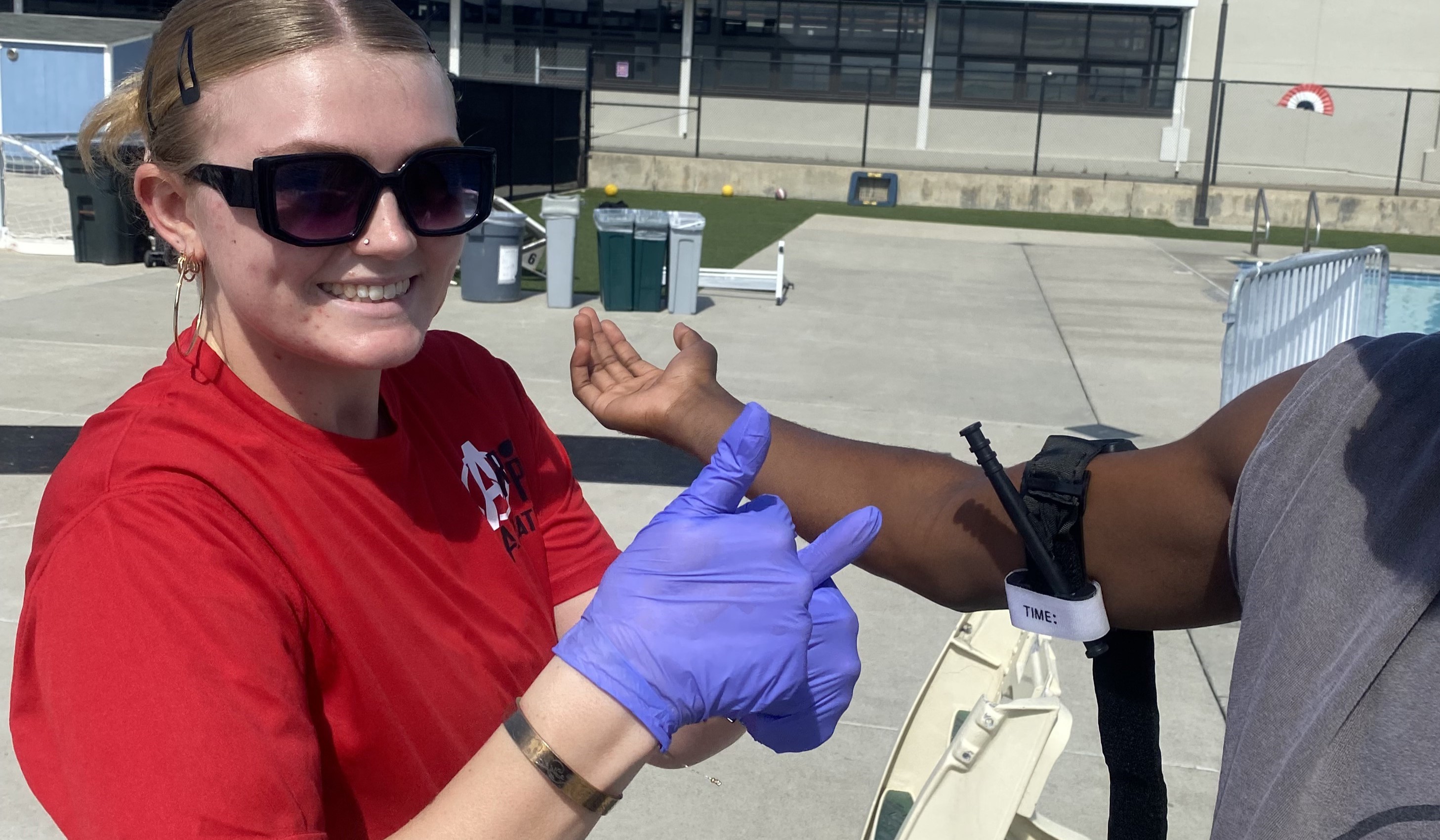THE CANVAS: An elevated courtyard surrounded by stone walls
THE PALETTE: Peach-colored cantera, Oklahoma flagstone, narrow stone tiles, root-beer-glass tiles, wrought-iron rails
THE MASTERPIECE: A two-story Escher painting, integrated perfection
Sometimes the most creative solutions come from tight restrictions. This courtyard was only 40-by-25-feet. The backyard sat 12 feet below. The homeowner, a contractor herself, wanted to be able to see the pool from the house. She asked Andre Del Re and Lisa North, partners in Da Vida Pools, LLC, to design a courtyard vessel that bridged both levels.
Shape and sound
The space largely defined the pool’s shape. A vanishing edge at the one open end was a must, but the designers still needed to provide a staircase for access to the lower level. North and Del Re drew an S-curved weir wall. The stairs would follow its contours.
The catch basin below would serve as a kiddie pool. As an added attraction, North and Del Re designed three vertical fountains for children to enjoy.
The pool itself has one more idiosyncrasy, one that can’t be easily detected. Because one leg of the U-shaped home was slightly crooked, the sides of the pool couldn’t be perfectly square. Thus, the left wall tilts by approximately 15 degrees to follow the line of the house and conceal the irregularity.
The designers placed a spillover spa at the back of the space. They elevated it 18 inches so that the water level was nearly even with the floors inside.
“When you walk into the front door of the house, you literally look over the top of the hot tub, which is a negative edge, and then you look over the negative edge of the pool on the other side,” Del Re says.
The designers wanted the spill-over to emit some sound throughout the house, but they couldn’t generate too much turbulence or the noise would be disruptive when echoing off the walls. The answer: a waterfall trail running down the flagstone steps into the pool. To create the right sound, the team experimented with different stone thicknesses and spilled water out of a bucket at varying speeds to determine the right volume and velocity.
Material matters
Finishes were chosen to go with the house. A peach-colored cantera was used for the decks, the back of the vanishing-edge wall and a column that helps stabilize the staircase. Two cantera spheres bookend the spa.
For the tight fit around the radiused vanishing-edge wall, the designers ordered 6-inch tiles, cut them in half and installed them vertically in an offset pattern. “We didn’t want continuous horizontal lines anywhere on the wall,” Del Re says. “The horizontal’s going to make your wall look shorter. Having the lines flow vertically gives you more of a perspective of height and makes it more dramatic.” Plus, the narrow pieces more easily wrapped around the curves.
The pool interior is finished in a medium to dark gray aggregate, which the builder created on site. The hue is 80 percent French gray and 20 percent black. The waterline is covered with a unique root-beer-colored glass tile. “It’s semi-iridescent, where you can actually see the reds and browns sparkle up, and the copper glistens,” Del Re says. “So it’s beautiful when you get the sun in the area. It brings out the rock of the house.”
The unusual combination of gray interior finish with a brown sparkly tile made perfect sense in a pool that’s special at every turn. “It was an interesting project, all the way from the word ‘go,’” Del Re says.


